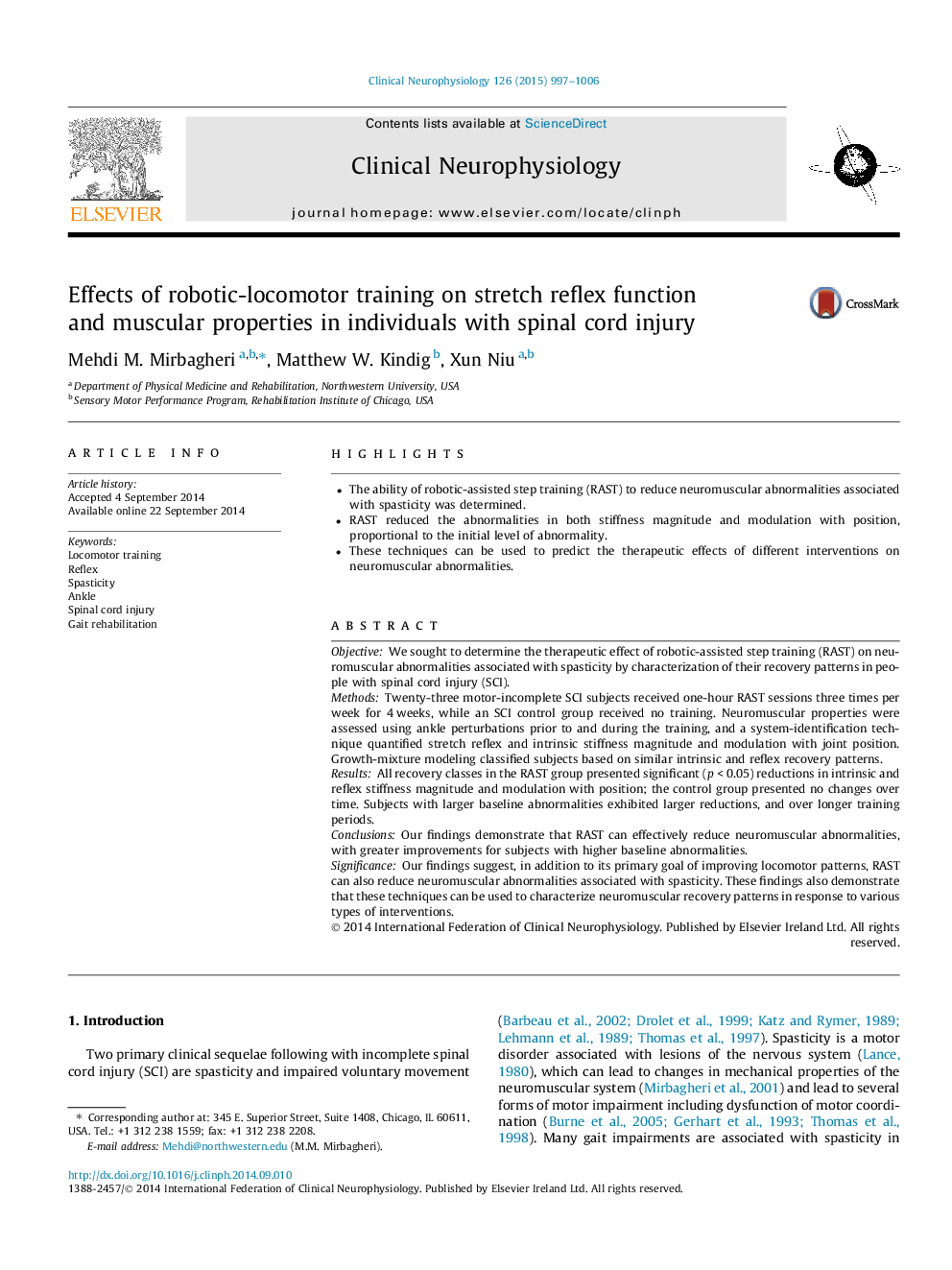| Article ID | Journal | Published Year | Pages | File Type |
|---|---|---|---|---|
| 3042794 | Clinical Neurophysiology | 2015 | 10 Pages |
•The ability of robotic-assisted step training (RAST) to reduce neuromuscular abnormalities associated with spasticity was determined.•RAST reduced the abnormalities in both stiffness magnitude and modulation with position, proportional to the initial level of abnormality.•These techniques can be used to predict the therapeutic effects of different interventions on neuromuscular abnormalities.
ObjectiveWe sought to determine the therapeutic effect of robotic-assisted step training (RAST) on neuromuscular abnormalities associated with spasticity by characterization of their recovery patterns in people with spinal cord injury (SCI).MethodsTwenty-three motor-incomplete SCI subjects received one-hour RAST sessions three times per week for 4 weeks, while an SCI control group received no training. Neuromuscular properties were assessed using ankle perturbations prior to and during the training, and a system-identification technique quantified stretch reflex and intrinsic stiffness magnitude and modulation with joint position. Growth-mixture modeling classified subjects based on similar intrinsic and reflex recovery patterns.ResultsAll recovery classes in the RAST group presented significant (p < 0.05) reductions in intrinsic and reflex stiffness magnitude and modulation with position; the control group presented no changes over time. Subjects with larger baseline abnormalities exhibited larger reductions, and over longer training periods.ConclusionsOur findings demonstrate that RAST can effectively reduce neuromuscular abnormalities, with greater improvements for subjects with higher baseline abnormalities.SignificanceOur findings suggest, in addition to its primary goal of improving locomotor patterns, RAST can also reduce neuromuscular abnormalities associated with spasticity. These findings also demonstrate that these techniques can be used to characterize neuromuscular recovery patterns in response to various types of interventions.
